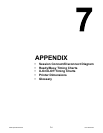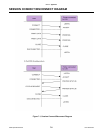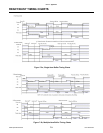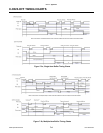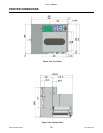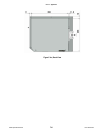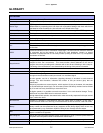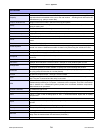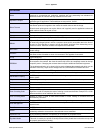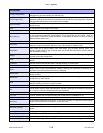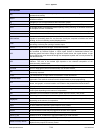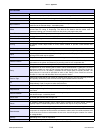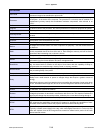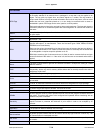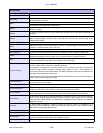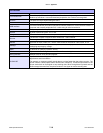
Unit 7: Appendix
Lt408 Operator Manual
7-9 PN: 9001152A
Diode
Allows current to flow in one direction but not the other to protect sensitive electronics. A diode
functions by compositing two conductive materials with one possessing low resistance to
electrical current on one side and high resistance on the other.
Dipswitch Complex
A group of tiny switches directly attached to a circuit board to enable configuration for a
particular type of application. These switches are two-position: On/Off.
Direct Thermal
The printing method that uses a chemically coated heat sensitive media. Once the heat from
the thermal printhead is applied to the media, the media darkens with the image.
Direct thermal printing does not require ribbon and is typically used in applications where the
label needs to endure for a year or less.
Disable To deactivate or make unable to function.
Divergent To deviate from the norm or to possess opposing positions.
DPI (Dots Per Inch) The quantity of printed dots within a square inch area - the print density.
DRAM
(Dynamic Random Access Memory) DRAM is the most common kind of RAM and is a network
of electrically-charged points in which a computer stores quickly accessible data in the form of
0s and 1s. Each storage or memory cell can be directly accessed if the intersecting row or
column is known. Each cell consists of a capacitor and a transistor.
Drive Train
The components and sub-assemblies that comprise the mechanical apparatus of motion or
kinetic energy.
Eccentric
Multiple items that do not share the same center - example: a circle whose center axis is not
the same as that of another to whom it is connected. The opposite of concentric.
E-Clip Type E snap ring.
EEPROM
(Electrically Erasable Programmable Read-Only Memory) Are ROM chips that do not have to
be removed to be rewritten. Nor does the entire chip have to be completely erased to change
a specific portion. Changing the contents does not require additional dedicated equipment.
The localized application of an electric field to each cell erases the targeted cells which can be
rewritten. Since only 1 byte can be changed at a time, EEPROM’s are versatile but slow.
Electronic Label A label that has an electronic RFID tag embedded within.
Electromagnetic Coupling In RFID, a system that uses a magnetic field as means of transferring data or power.
Electrostatic Coupling
In RFID, a system which uses the induction of voltage on a plate as a means of transferring
data or power.
Ellipse An oval shape that is symmetrical on either side of its center when divided into quadrants.
Embossed Characters or graphics that are raised above the remaining surface.
Enable To activate or make able to function.
Encompass To surround, encircle, or contain.
Error Correcting Code
(ECC) In RFID, supplemental bits in a data transfer used in conjunction with a polynominal
algorithm in order to compute the value of missing or erroneous data bits. Example: for a 32-bit
data transmission, seven additional bits are required.
Error Correcting Mode
Relative to RFID, a mode of data communication in which missing or erroneous bits are
automatically corrected.
Error Correcting Protocol Relative to RFID, the rules by which the error-correcting mode operates.
Error Management
In RFID, the techniques used to ensure that only correct information is presented to the
system’s user.
Error Rate In RFID, the number of errors per number of transactions.
Exciter
In RFID, the electronics which drive an antenna. When coupled with antenna, they are
collectively referred to as a scanner. Also referred to as a transmitter.
Expansion Port A plug accessing additional 1/0 capability on a computer or peripheral device.
Eye-Mark Media
Print media with a mark on the paper backing between each label for the label sensor to read.
This mark is used by the printer to identify the end of the printed label so that the next up can
be properly positioned for printing.
GLOSSARY



